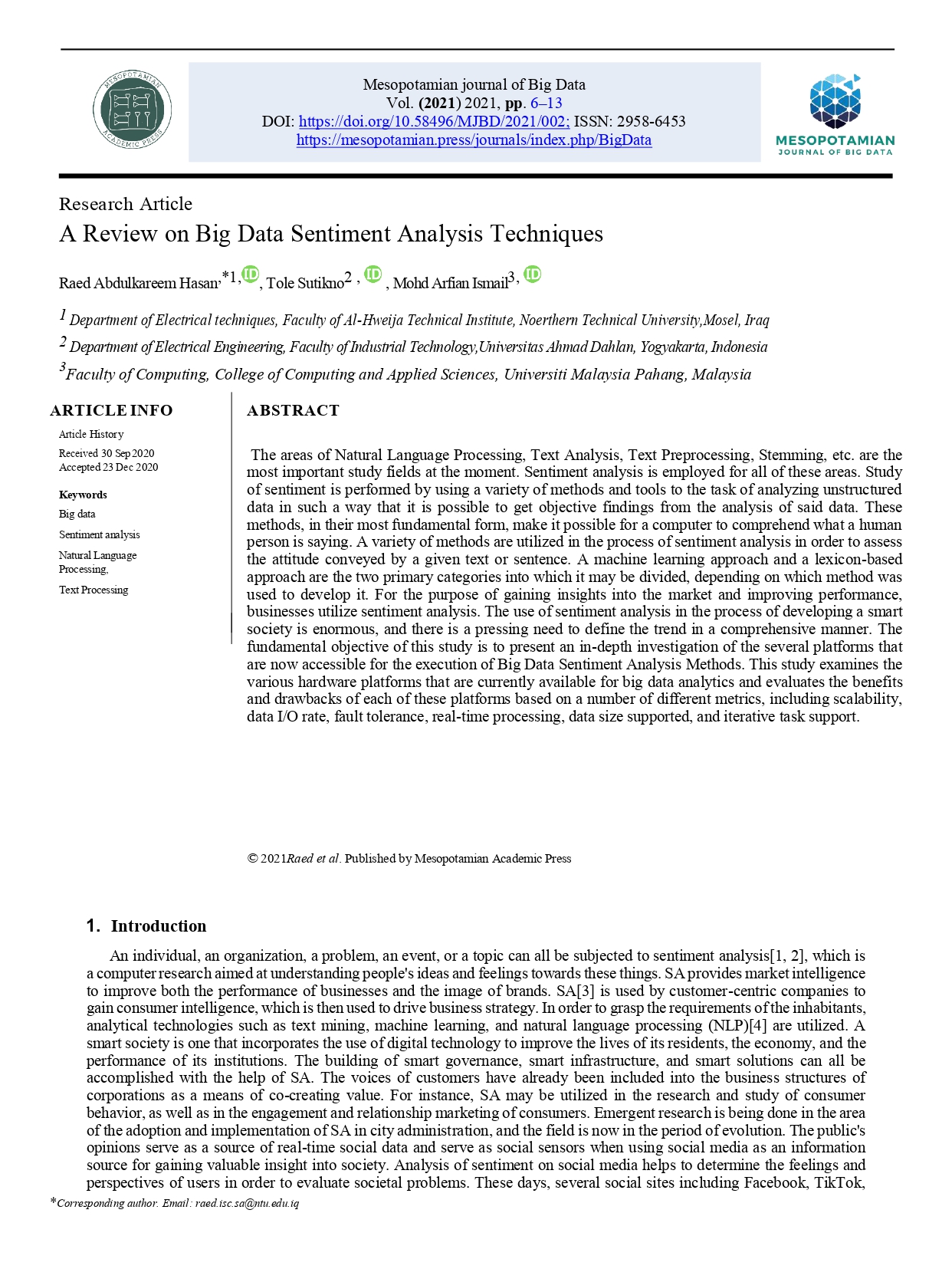A Review on Big Data Sentiment Analysis Techniques
Main Article Content
Abstract
The areas of Natural Language Processing, Text Analysis, Text Preprocessing, Stemming, etc. are the most important study fields at the moment. Sentiment analysis is employed for all of these areas. Study of sentiment is performed by using a variety of methods and tools to the task of analyzing unstructured data in such a way that it is possible to get objective findings from the analysis of said data. These methods, in their most fundamental form, make it possible for a computer to comprehend what a human person is saying. A variety of methods are utilized in the process of sentiment analysis in order to assess the attitude conveyed by a given text or sentence. A machine learning approach and a lexicon-based approach are the two primary categories into which it may be divided, depending on which method was used to develop it. For the purpose of gaining insights into the market and improving performance, businesses utilize sentiment analysis. The use of sentiment analysis in the process of developing a smart society is enormous, and there is a pressing need to define the trend in a comprehensive manner. The fundamental objective of this study is to present an in-depth investigation of the several platforms that are now accessible for the execution of Big Data Sentiment Analysis Methods. This study examines the various hardware platforms that are currently available for big data analytics and evaluates the benefits and drawbacks of each of these platforms based on a number of different metrics, including scalability, data I/O rate, fault tolerance, real-time processing, data size supported, and iterative task support.
Article Details
Issue
Section

This work is licensed under a Creative Commons Attribution 4.0 International License.
